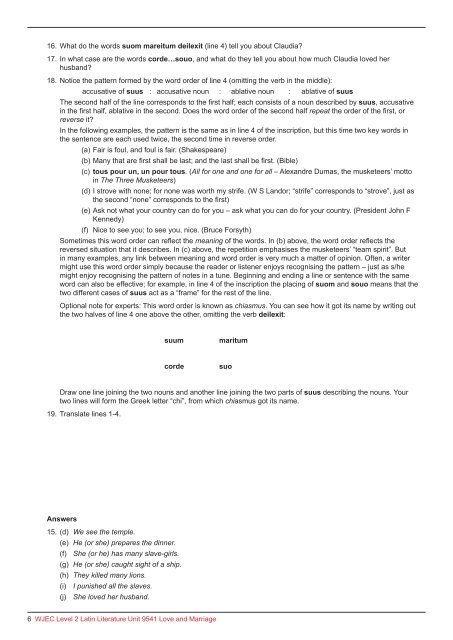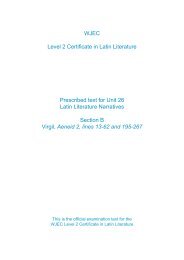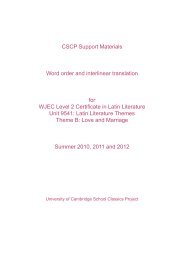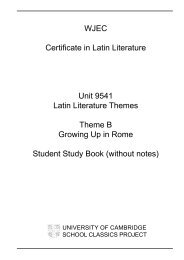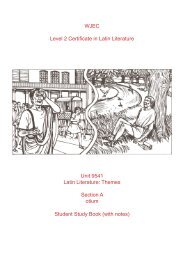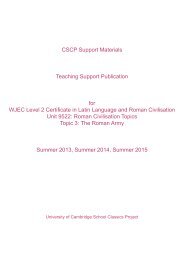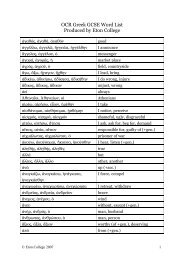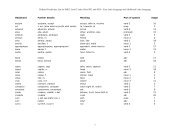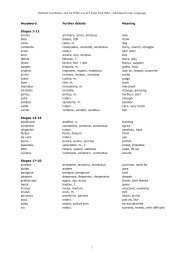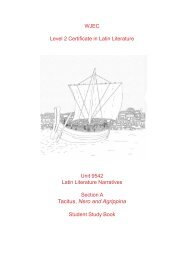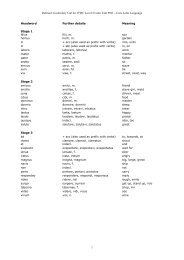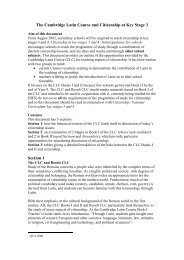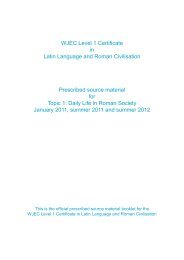2. Student Study Book - Cambridge School Classics Project
2. Student Study Book - Cambridge School Classics Project
2. Student Study Book - Cambridge School Classics Project
You also want an ePaper? Increase the reach of your titles
YUMPU automatically turns print PDFs into web optimized ePapers that Google loves.
16. What do the words suom mareitum deilexit (line 4) tell you about Claudia?17. In what case are the words corde…souo, and what do they tell you about how much Claudia loved herhusband?18. Notice the pattern formed by the word order of line 4 (omitting the verb in the middle):accusative of suus : accusative noun : ablative noun : ablative of suusThe second half of the line corresponds to the first half; each consists of a noun described by suus, accusativein the first half, ablative in the second. Does the word order of the second half repeat the order of the first, orreverse it?In the following examples, the pattern is the same as in line 4 of the inscription, but this time two key words inthe sentence are each used twice, the second time in reverse order.(a) Fair is foul, and foul is fair. (Shakespeare)(b) Many that are first shall be last; and the last shall be first. (Bible)(c) tous pour un, un pour tous. (All for one and one for all – Alexandre Dumas, the musketeers’ mottoin The Three Musketeers)(d) I strove with none; for none was worth my strife. (W S Landor; “strife” corresponds to “strove”, just asthe second “none” corresponds to the first)(e) Ask not what your country can do for you – ask what you can do for your country. (President John FKennedy)(f) Nice to see you; to see you, nice. (Bruce Forsyth)Sometimes this word order can reflect the meaning of the words. In (b) above, the word order reflects thereversed situation that it describes. In (c) above, the repetition emphasises the musketeers’ “team spirit”. Butin many examples, any link between meaning and word order is very much a matter of opinion. Often, a writermight use this word order simply because the reader or listener enjoys recognising the pattern – just as s/hemight enjoy recognising the pattern of notes in a tune. Beginning and ending a line or sentence with the sameword can also be effective; for example, in line 4 of the inscription the placing of suom and souo means that thetwo different cases of suus act as a “frame” for the rest of the line.Optional note for experts: This word order is known as chiasmus. You can see how it got its name by writing outthe two halves of line 4 one above the other, omitting the verb deilexit:suummaritumcordesuoDraw one line joining the two nouns and another line joining the two parts of suus describing the nouns. Yourtwo lines will form the Greek letter “chi”, from which chiasmus got its name.19. Translate lines 1-4.Answers15. (d) We see the temple.(e) He (or she) prepares the dinner.(f) She (or he) has many slave-girls.(g) He (or she) caught sight of a ship.(h) They killed many lions.(i) I punished all the slaves.(j) She loved her husband.6 WJEC Level 2 Latin Literature Unit 9541 Love and Marriage


